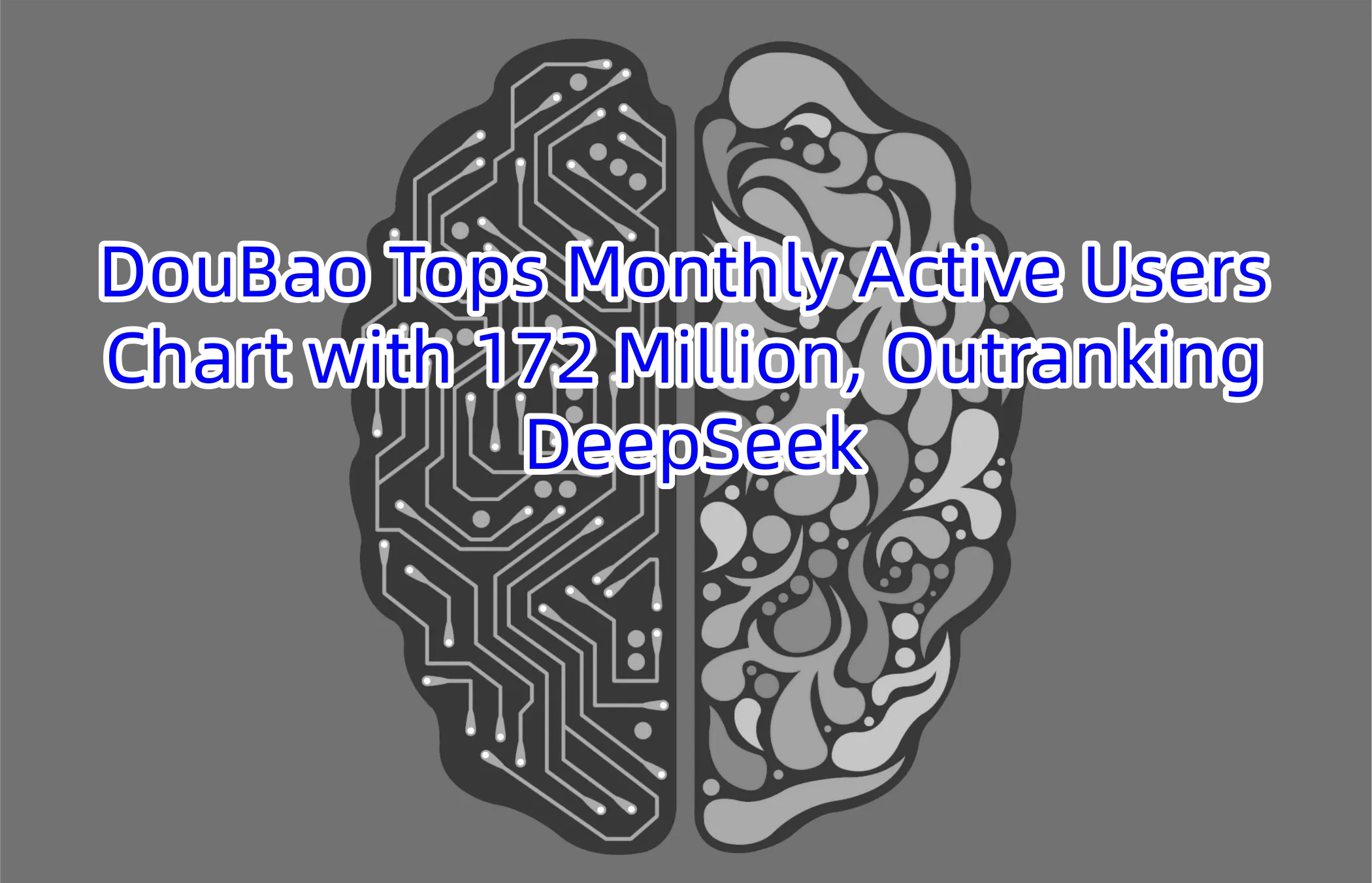
In the latest QuestMobile industry report for Q3 2025, DouBao, developed by ByteDance, has claimed the top spot with 172 million monthly active users (MAU), surpassing DeepSeek, which recorded 144 million MAU.
This marks a significant shift in the AI application market, as DeepSeek previously led with 194 million MAU as recently as April 2025. The rapid change in leadership highlights the intense competition and fast-evolving dynamics within the AI sector.
This isn’t just a simple change in rankings—it reflects a deeper transformation in how AI applications compete. DouBao’s rise underscores the growing power of ecosystem-driven traffic, while also revealing the limitations of relying solely on technical expertise.
A key factor behind DouBao’s success is its integration within ByteDance’s powerful ecosystem. With support from super-apps like Douyin and CapCut, DouBao benefits from massive daily user traffic, allowing seamless user conversion without the challenges of costly customer acquisition.
In contrast, DeepSeek, as a general-purpose intelligent Q&A product, lacks a strong ecosystem, leaving it increasingly isolated. Despite its recognized technical capabilities, the platform has struggled with user retention. Frequent server overload issues have also been a persistent concern, and although recent improvements have been made, interruptions still occur.
Additionally, throughout Q3, DeepSeek only released minor updates like V3.1 and V3.2, with no major version upgrades meeting market expectations. Among leading AI assistants, DeepSeek remains the only one that does not support multimodal functions—it processes text but cannot handle images, voice, or other media.
Meanwhile, competitors like DouBao and Yuanbao are leveraging their ecosystems to offer features such as AI image generation, voice interaction, and video creation. DouBao, in particular, has integrated multiple functions—text-to-image, voice interaction, and video generation—transforming itself into a versatile super-app.
The difference is striking. It’s comparable to the gap between a basic phone that only makes calls and a smartphone that offers a full range of features—while some users may only need core functions, most today expect a richer, more integrated experience.
Currently, the AI application market is dominated by DouBao and DeepSeek, which together account for nearly 90% of the total MAU in this segment. Tencent’s Yuanbao ranks third with 32.86 million MAU—a notable figure, but still far behind the top two.
At the same time, former rising stars like Kimi, Zhipu Qingyan, and MiniMax have seen a collective decline. Kimi’s MAU has fallen below 10 million, while Zhipu Qingyan experienced a drop of over one-third.
This trend signals a market shake-out. Tech giants are leveraging their vast user bases, data, and diverse application scenarios, while emerging AI startups must identify and secure their unique, indispensable value to survive in an increasingly crowded field.
It’s worth noting that although the general AI assistant segment is now dominated by giants, several niche applications are thriving by focusing on vertical markets.
For example, Ant Group’s AI health app, AQ, made a surprise entry into the rankings this quarter with 7.85 million MAU. It addresses clear user needs in health management, such as interpreting medical reports and analyzing medication instructions.
Similarly, ByteDance’s content creation assistant, Xiao Yun Que, saw a remarkable 246.1% quarter-on-quarter growth in MAU, topping the growth rankings. Its success stems from a clear focus—helping users generate short videos with one click, effectively addressing a key pain point for content creators.
